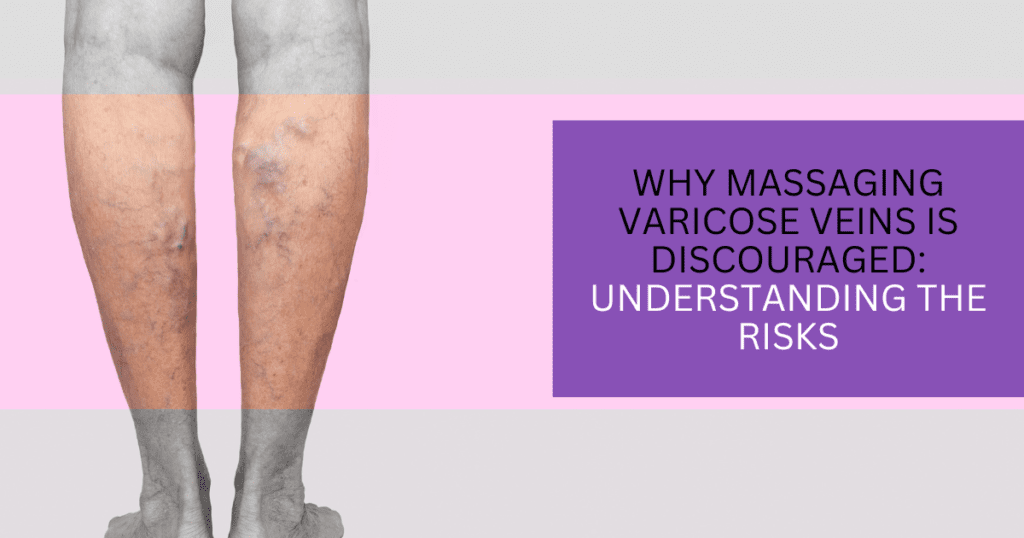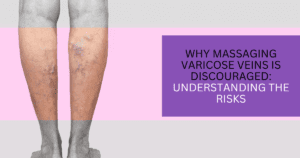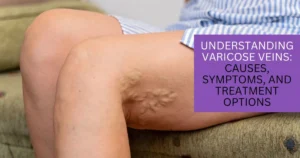Varicose veins are often known for their big blue bulging appearance beneath the surface of the skin. They are not just a cosmetic concern but a sign of a major health issue. The pain and discomfort are undeniable, and if not treated in a timely manner, they can lead to other health concerns.
Like other similar conditions, there is a misconception that massage for varicose veins can be effective. Although massages are widely recommended for releasing muscle tension and relieving stress, according to spider vein treatment Chicago clinic experts, it’s the opposite case. Here is everything you need to know about the risks associated with massaging varicose veins:
What are Varicose Veins?
To know the risks linked with massaging varicose veins, it is vital to understand what causes them. The condition when your veins become dilated, enlarged, and overflowed with blood is called varicose veins. They usually appear in the legs and are often caused by increased blood pressure. Their exact location can also be traced through vein mapping ultrasound. Veins have one-way valves that prevent blood from overflowing. However, their failure leads to the accumulation of blood instead of flowing toward the heart.
Why is Massaging Varicose Veins advised against?
Here are the risks associated with massaging varicose veins that will compel you to get proper treatment from a renowned vein clinic Chicago or the one near you:
Increased Blood Clotting:
Since varicose veins result from overflowing and accumulation of blood, blood clots are likely to form in them. Applying pressure through different massaging techniques can lead to their dislodging.
Once they enter and flow through the bloodstream, you can face severe conditions like pulmonary embolism. This blood clot can be life-threatening since it can cause a stroke or heart attack once it reaches the brain or heart.
Increase Discomfort:
Unlike other vein-related conditions, massaging varicose veins can increase discomfort. Instead of improving blood circulation, massage can hinder it. As a result, you can experience more swelling and pain as the veins swell and become distended. This worsening of symptoms leads to further weakening of the vein walls, making them prone to additional complications such as the formation of venous ulcers or spontaneous bleeding from the overstressed veins.
Damaged Vein Walls:
Since varicose veins are already bulging and all swelled up, massaging can lead to severe physical damage. These veins, already stretched and weakened, can instantly rupture the moment you apply pressure on them. The rupture veins lead to bleeding, thus resulting in hemorrhaging. Therefore, it’s not recommended by experts for patients to get the affected areas massaged.
Alternatives of Massage for Treating Varicose Veins:
According to many vein treatment clinic experts, here are the few alternatives you can try for the alleviation of varicose symptoms and provide you the much-needed relief from the discomfort:
Compression Therapy:
Compression stockings are essential for managing varicose veins. These specially designed stockings apply graduated pressure to the legs, with the strongest compression at the ankle and decreasing up the leg. This gradient supports the veins and helps propel blood upwards toward the heart.
Research has shown that this method can significantly reduce the diameter of distended veins, improving blood speed and alleviating symptoms.
Exercise:
Engaging in regular, low-impact exercise such as walking, cycling, or swimming enhances circulation and strengthens the calf muscles, which act as pumps to assist blood flow back to the heart. This activity not only helps reduce symptoms associated with varicose veins but also aids in preventing the progression of the condition.
Studies have demonstrated that consistent exercise improves vein health by enhancing blood flow and reducing the overall pressure in the veins.
Elevation:
Periodically elevating the legs above the heart level, especially after prolonged standing or sitting, helps reverse the effects of gravity on blood flow. This simple practice can reduce venous pressure and swelling in the legs by facilitating venous return and decreasing venous pressure. This method is often recommended at the end of the day to alleviate daily symptoms of pain and swelling.
Diet and Hydration:
A well-balanced diet rich in high-fiber foods can prevent issues such as constipation that might contribute to venous strain due to intra-abdominal pressure. Adequate hydration maintains proper blood volume and viscosity, ensuring efficient circulation.
Water is crucial for healthy blood properties and preventing blood clots, while dietary fiber helps reduce the strain on the circulatory system by improving bowel regularity.
The Bottom Line:
Massaging varicose veins might sound like a soothing notion, but it’s the opposite in reality. You should consider knowing the risks associated with massaging and opting for expert-approved solutions. Since prevention is better than cure, taking care of your body and knowing what you should do and shouldn’t can promote better health.
If you are experiencing the discomfort of varicose veins and want to speak with an expert, visit Chicago Vein Center for sound advice and effective treatment.




